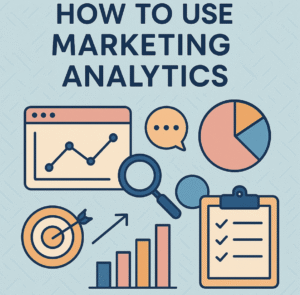
Market demand refers to the total quantity of a product or service that consumers are willing to purchase at a given price. Understanding it is essential for business success. It helps you identify demand drivers, align your offerings with market trends, and adapt to major trends shaping consumer behavior. Researching market demand allows you to estimate sales potential, set competitive prices, and tailor marketing strategies to meet customer needs.
Neglecting market demand can lead to serious consequences. Businesses may struggle to adapt to changing customer preferences or fail to respond to evolving market conditions. Undefined processes and a lack of transparency can further hinder growth, leaving opportunities untapped.
Knowing how to find market demand ensures your business stays relevant and competitive.
What Is Market Demand and Why Is It Important?
Definition of Market Demand
Market demand refers to the total quantity of a product or service that consumers are willing and able to purchase at a specific price and time. It reflects the collective needs and desires of your target market, shaped by factors like pricing, consumer preferences, income levels, and economic conditions. This concept plays a vital role in business planning, helping you determine the price point your audience is willing to pay.
For example, if you analyze the market and notice a growing interest in eco-friendly products, you can adjust your offerings to meet this demand.
Understanding market demand is not just about knowing what consumers want today. It also involves predicting future demand. By identifying trends and emerging opportunities, you can position your business to stay ahead of competitors and capture new markets.
Why Market Demand Matters for Businesses
Identifying Profitable Opportunities
Market demand helps you identify where the most profitable opportunities lie. For instance, during the COVID-19 pandemic, companies like Encircled pivoted to producing non-surgical masks due to a sudden spike in demand. This quick response allowed them to dominate the market and achieve significant success. By staying attuned to consumer needs, you can uncover gaps in the market and create products or services that address those needs.
Reducing Risks of Product Failure
Launching a product without understanding market demand can lead to costly failures. Conducting research allows you to test ideas, validate assumptions, and ensure your offerings align with what your target market wants.
For example, Pastreez tested their French macarons at farmers markets before scaling their business. This approach minimized risks and ensured their product resonated with customers.
Guiding Marketing and Pricing Strategies
Market demand provides valuable insights that guide your marketing and pricing strategies. Knowing what your audience values most helps you craft messages that resonate and set prices they are willing to pay. For example, a multinational chocolate manufacturer used demand analysis to refine its strategy, achieving a 60% increase in consumption. This demonstrates how understanding demand can directly impact your bottom line.
Key Factors That Determine Market Demand
Understanding the factors that influence market demand helps you make informed decisions and forecast sales potential effectively. These elements shape how consumers behave and what they are willing to purchase. Let’s explore three key factors that determine market demand.
Pricing and Affordability
Price plays a critical role in shaping demand. Consumers often evaluate whether a product or service fits their budget before making a purchase. If prices are too high, demand may drop as fewer people can afford it. On the other hand, competitive pricing can attract more buyers and increase sales potential.
For example, when a company offers discounts or promotions, it often sees a spike in demand. To calculate market demand accurately, you need to assess how price changes impact consumer behavior.
Consumer Preferences and Trends
Consumer preferences constantly evolve, influenced by cultural shifts, social media, and emerging trends. For instance, the growing interest in sustainable and eco-friendly products has driven demand in industries like fashion and food. Staying updated on these trends allows you to align your offerings with what consumers want. Social listening tools and surveys can help you identify these preferences. By understanding these factors that influence market demand, you can forecast future trends and adapt your strategies accordingly.
Economic and Market Conditions
Economic conditions, such as employment rates and disposable income, directly affect purchasing power. During economic downturns, consumers may prioritize essential goods over luxury items. Market conditions, including supply chain disruptions or inflation, also play a role.
For example, rising fuel prices can increase transportation costs, impacting product affordability. Monitoring these conditions helps you forecast market demand and adjust your business plans to stay competitive.
Competition and Industry Landscape
Understanding your competition is essential for evaluating market demand. Competitors influence consumer choices and shape industry trends. To stay ahead, you need to monitor their strategies and assess their impact on your business.
Start by identifying your top competitors. Look for businesses targeting similar audiences or offering comparable products. Use tools like Google to search industry keywords and check directories or associations for relevant companies. Once you know who your competitors are, analyze their strengths, weaknesses, opportunities, and threats (SWOT). Having such an analysis helps you uncover gaps in the market that your business can fill.
Tracking competitors’ online activity is another effective strategy. Monitor their websites, social media platforms, and customer reviews. Pay attention to their marketing campaigns, product launches, and customer engagement tactics. Attending industry events and conferences can also provides valuable insights.
These gatherings allow you to observe trends, network with peers, and learn from competitors’ successes and failures.
Pricing and promotions play a significant role in shaping consumer behavior. Keep an eye on how competitors price their products and what discounts or offers they provide. This information helps you position your offerings competitively. Ask your customers about their experiences with competitors. Their feedback can reveal areas where you can improve or differentiate your business. Staying informed about the industry landscape ensures your business remains competitive. It also helps you adapt to changes and seize new opportunities.
Technological Advancements
Technology constantly reshapes industries and influences market demand. Innovations create new opportunities while disrupting traditional business models. To stay relevant, you must embrace technological advancements and understand their impact on your market. Automation and artificial intelligence (AI) are transforming how businesses operate. AI-powered tools analyze consumer behavior, predict trends, and personalize marketing efforts.
For example, chatbots enhance customer service by providing instant responses to inquiries. Adopting these technologies can improve efficiency and customer satisfaction.
E-commerce platforms have revolutionized the way consumers shop. Online marketplaces like Amazon and Shopify make it easier for businesses to reach global audiences. If your business isn’t leveraging e-commerce, you risk falling behind competitors who do.
Similarly, social media platforms offer powerful tools for engaging with customers and promoting your brand.
Emerging technologies like augmented reality (AR) and virtual reality (VR) are also gaining traction. These tools create immersive experiences that attract and retain customers. For instance, furniture retailers use AR to let customers visualize products in their homes before purchasing. Exploring such innovations can set your business apart from competitors.
Staying updated on technological advancements ensures your business remains agile and competitive. It also helps you meet evolving consumer expectations and capitalize on new trends.
How to Find Market Demand: Step-by-Step Guide
Conduct Keyword Research
Keyword research is a powerful way to understand what your audience is searching for online. Tools like Google Keyword Planner and SEMrush can help you uncover valuable insights. Google Keyword Planner provides accurate data directly from Google, making it reliable for understanding search volume. It is also free, which makes it accessible for businesses on a budget. SEMrush offers a more comprehensive package, including keyword competition analysis and trends.
It also provides data on both organic and paid search results, giving you a complete picture of keyword performance.
To make the most of keyword research, follow these best practices:
-
Create detailed buyer personas to understand your audience’s needs and search behaviors.
-
Analyze competitors’ keywords to identify gaps in their strategies.
-
Focus on long-tail keywords that are specific and less competitive. These can attract targeted traffic.
-
Balance search volume and difficulty to select effective keywords.
-
Consider user intent to ensure the keywords align with what people are actually searching for.
This approach helps you identify terms that reflect market demand and guide your marketing efforts.
Leverage Social Listening
Social listening allows you to monitor online conversations and understand what people are saying about your industry or brand. Platforms like Twitter, Facebook, and Reddit are great places to start. Social listening tools can track hashtags, keywords, and mentions related to your business.
These tools also analyze data to reveal overall brand sentiment and consumer pain points.
Here are some techniques to leverage social listening effectively:
-
Monitor discussions to identify unmet needs or frustrations.
-
Track competitors’ online activities to gain insights into market demand.
-
Use social media analytics to inform your marketing campaigns and improve your products.
For example, if you notice frequent complaints about a competitor’s product, you can address those issues in your own offerings. Social listening helps you stay connected to your audience and adapt to their needs.
Analyze Market Reports and Data
Market reports provide valuable insights into market size, growth, and consumer behavior. Trusted sources like Nielsen, Statista, and IBISWorld offer detailed data that can guide your decisions. These reports help you understand trends and forecast future demand.
When analyzing market reports, focus on the following:
-
Look for data on market size to estimate the potential customer base.
-
Study growth trends to identify emerging opportunities.
-
Examine consumer behavior to understand purchasing patterns.
For instance, if a report shows increasing demand for sustainable products, you can align your offerings with this trend. Using reliable data ensures your market research is accurate and actionable.
Survey Your Target Audience
Surveys are a powerful tool for understanding your target audience and uncovering insights about market demand. They allow you to gather direct feedback on preferences, needs, and willingness to pay. Tools like Google Forms and Typeform make creating and distributing surveys simple and efficient. These platforms offer user-friendly interfaces and customizable templates, enabling you to design surveys that align with your business goals.
To create effective surveys, focus on asking clear and concise questions. For example, include questions about the features your audience values most in a product or service. Ask about their pain points and what solutions they seek. You can also inquire about their price sensitivity by presenting different pricing options and gauging their responses.
Open-ended questions can provide deeper insights, while multiple-choice questions make it easier to analyze trends.
Distribute your surveys through channels where your audience is most active. Email campaigns, social media platforms, and website pop-ups are excellent options. Offering incentives, such as discounts or free samples, can encourage participation. Once you collect responses, analyze the data to identify patterns and actionable insights. This process helps you align your offerings with what your audience truly wants.
Test Your Product or Service
Testing your product or service with a minimum viable product (MVP) is an effective way to validate market demand. An MVP is a simplified version of your offering that includes only the core features. Launching an MVP allows you to gather feedback from early adopters and refine your product based on their input.
Several successful businesses started with MVPs to test their concepts. Amazon began as an online bookstore, gauging demand for books before expanding into a global retail platform. Turo, initially known as RelayRides, tested the idea of peer-to-peer car rentals before becoming a major marketplace. Dropbox used a simple video to demonstrate its cloud storage concept, attracting interest before building the actual product.
To test your MVP, identify a small segment of your target audience and introduce your offering to them. Use their feedback to understand what works and what needs improvement. For example, if users find a feature confusing, you can simplify it in the next iteration. This iterative process minimizes risks and ensures your product meets market expectations.
Testing also helps you determine pricing strategies. Experiment with different price points and observe how customers respond. This approach provides valuable insights into their willingness to pay, enabling you to set competitive prices. By testing your product or service, you can make data-driven decisions and increase your chances of success.
How to Conduct Market Demand Analysis
Analyze Collected Data
Identify patterns in consumer behavior
Analyzing consumer behavior helps you uncover trends that influence purchasing decisions. Look for recurring themes in your data, such as preferences for specific product features or common pain points. For example, if surveys reveal that customers value eco-friendly packaging, you can prioritize this in your offerings. Use tools like spreadsheets or data visualization software to organize and interpret your findings. This approach ensures you identify actionable insights that align with market demand.
Spot gaps and opportunities in the market
Spotting gaps in the market allows you to address unmet needs. Compare your findings with existing products or services to identify areas where competitors fall short. For instance, if your analysis shows a lack of affordable options in a premium market, you can position your product to fill this void.
This strategy not only differentiates your business but also helps you capture untapped customer segments.
Assess Market Size and Growth Potential
Estimate the number of potential customers
Estimating market size involves determining how many people might buy your product. Use methods like the top-down approach, which starts with a broad market estimate and narrows it down to specific segments. Alternatively, the bottom-up approach builds estimates from smaller segments, offering more precise projections. Combine these methods with market research tools like surveys to refine your market size forecast.
Evaluate the market’s long-term viability
Assessing growth potential ensures your business remains sustainable. Look for indicators like increasing demand or emerging trends that align with your offerings. For example, if reports show a steady rise in online shopping, investing in e-commerce could be a smart move.
Use growth metrics to evaluate whether the market can support your business over time.
Evaluate the Competitive Landscape
Identify key competitors and their strategies
Understanding your competitors helps you position your business effectively. Use frameworks like Porter’s Five Forces to analyze competitive pressures, including the threat of new entrants and buyer power. Tools like SWOT analysis can also highlight competitors’ strengths and weaknesses. For example, if a competitor excels in customer service but lacks innovation, you can focus on offering cutting-edge solutions.
Assess their strengths, weaknesses, and market share
Evaluating competitors’ market share provides insights into their influence. Use tools like customer journey maps to understand how they attract and retain customers. A growth-share matrix can help you prioritize initiatives based on market growth and share. For instance, if a competitor dominates a declining market, you might focus on emerging segments instead. This analysis ensures your strategies remain competitive and forward-thinking.
Test Pricing Sensitivity
Experiment with different price points
Testing different price points helps you understand how much your customers are willing to pay for your product or service. This process allows you to identify the optimal price that balances profitability with customer satisfaction. Start by selecting a range of price points to test. For example, you might offer your product at a low, medium, and high price to see how customers respond. Each price point should reflect realistic scenarios based on your market research.
You can use methods like Van Westendorp’s Price Sensitivity Meter to gauge customer reactions. This technique involves asking a series of questions to determine the price range customers find acceptable. It helps you pinpoint the price that feels “too expensive” or “too cheap” to your audience. Another effective method is the Gabor Granger pricing technique. This approach measures price sensitivity by showing customers different price options and analyzing how their interest changes.
Both methods provide valuable insights into the relationship between price and demand.
When testing, consider offering limited-time promotions or discounts to observe how customers react. For instance, a flash sale at a lower price can reveal whether price is a significant barrier for your audience. Keep track of sales data and customer feedback during these tests to identify patterns.
Analyze consumer responses to pricing changes
Understanding how customers respond to pricing changes is crucial for refining your strategy. Analyze the data collected during your tests to evaluate how price adjustments impact sales volume and customer behavior. For example, if a lower price leads to a significant increase in sales, it may indicate that your audience is price-sensitive. On the other hand, if sales remain steady despite a price increase, your product might have strong perceived value.
Segment your audience to uncover differences in price sensitivity. Some groups may prioritize affordability, while others value premium features. Use this information to tailor your pricing strategy to different customer segments. For instance, you could offer a basic version of your product at a lower price and a premium version with additional features at a higher price.
Visualizing your findings can make analysis easier. Create a table to compare sales performance at different price points:
|
Price Point |
Sales Volume |
Customer Feedback |
Revenue Generated |
|---|---|---|---|
|
$10 |
500 units |
Affordable |
$5,000 |
|
$15 |
350 units |
Reasonable |
$5,250 |
|
$20 |
200 units |
Expensive |
$4,000 |
This type of analysis helps you make data-driven decisions and align your pricing strategy with market demand. Incorporating these insights into your market demand analysis ensures your business remains competitive and profitable.
Understanding market demand is essential for making informed business decisions. Following a structured approach ensures you stay ahead in a competitive market. Start by identifying your target users and analyzing the market through surveys and competitor research. Monitor industry trends and test your ideas with small launches. Businesses like Netflix and Uber have thrived by adopting data-driven strategies to predict demand and optimize offerings.
Following these steps helps you align with customer needs, reduce risks, and seize profitable opportunities. A data-driven mindset ensures your business remains adaptable and successful.


